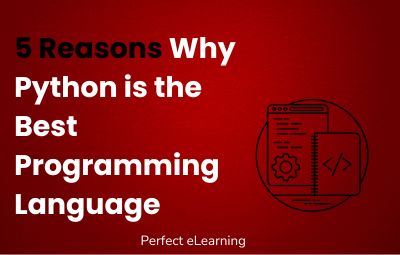

Python is an excellent place to start if you want to start contributing to open source. You'll not only be contributing to one of the largest projects ever undertaken, but you'll also be doing it as part of a vibrant and inclusive community. Open-source projects rely on volunteer contributions like yours to grow and improve, so you'll be making a significant contribution to the future of open-source software.
Furthermore, contributing to open source is a wonderful method to learn and develop your skills, so don't be concerned if you don't feel like an expert. Even if you are unaware of it, there may be a method to contribute that is ideal for you. Everything begins with your first contribution!
Finding an open-source project
This will be mostly determined by your own and current set of interests and talents. For example, if you're a student interested in baking and finance, you may look on GitHub for current open-source software projects that cover this niche.
Certain repositories on GitHub with the “awesome-projects” badge serve as a collection of open-source projects related to a specific category. Once you've identified a project that matches your interests and skills, the next step is to determine how large and active the project is.
Below are some of the top and very Interesting Python Open-Source Project Ideas:
Flask - 56.5k stars
This is a Python-based micro web framework. It lacks form validation and a database abstraction layer, although it permits third-party libraries for common functionality. That is why it is referred to as a microframework. Flask is designed to make app development simple and quick, as well as to be scalable and lightweight. It is built on the Werkzeug and Jinja2 technologies.
Keras - 52.3k stars
Keras is a Python interface for artificial neural networks that is a free source. Keras used to support a variety of machine learning and deep learning libraries, however, as of version 2.4, it solely serves as an interface to the TensorFlow library.
SpaCy - 21.2k stars
This is an open-source software library written in Python and Cython that deals with Natural Language Processing. While NLTK is mostly used for teaching and research, spaCy's role is to deliver tools for production. Think is also spaCy's machine learning library, which includes CNN models for part-of-speech tagging, dependency parsing, and named entity recognition.
Scikit-learn - 47K stars
It is a Python-based free freeware machine learning tool package. It includes classification, regression, and clustering techniques, such as random forests, gradient boosting, and DBSCAN. This is based on SciPy, which must be installed before you can use sci-kit learn. It also has models for ensemble methods, feature extraction, parameter tuning, manifold learning, feature selection, dimensionality reduction, etc.
Django - 59.4k stars
Django is a Python web framework that allows for the rapid building of safe and maintained websites. Django, which was created by professional developers, takes care of most of the hassle of web development, allowing you to focus on developing your app instead of reinventing the wheel. It is free and open-source, has a robust and active community, excellent documentation, and numerous free and paid-for support alternatives.
Django assists developers in avoiding many typical security blunders by providing a framework that has been engineered to "do the right things" to automatically defend the website.
TensorFlow Models - 71.1k Stars
TensorFlow projects are intended for new developers interested in Machine Learning and Deep Learning. Before contributing to any project, beginners should ideally learn from some TensorFlow Tutorials and study the official models.
This is a repository containing several TensorFlow models, including official and research models. TensorFlow's high-level APIs are used in the official models. The research models are the models that researchers use in TensorFlow to maintain them or to provide support on issues and pull requests.
Matplotlib - 14.2k stars
Matplotlib is a fantastic Python visualization package for 2D array charts. Matplotlib is a multi-platform data visualization package based on NumPy arrays and designed to operate with the SciPy stack as a whole.
Youtube-dl - 99.7k stars
YouTube-dl is a command-line tool for Windows, macOS, and Linux that is free and open source. You can use it to download videos from YouTube and other video-sharing websites. YouTube-dl can download videos from over 700 video-hosting websites.
Ansible - 49.7k stars
Ansible is a RedHat-created automation platform that assists developers with system configuration, software deployment, network management, and scheduling activities such as zero-downtime rolling upgrades, continuous deployments, and other advanced IT chores. Ansible has regularly been one of the most popular pages on GitHub since its launch in 2016.
Many developers have been drawn to Ansible because of its straightforward setup and low learning curve and its simplicity of usage and versatility.
HTTPie - 51.8k stars
HTTPie is an HTTP client that runs from the command line. It simplifies CLI interaction with web services. It allows us to send arbitrary HTTP requests with a simple syntax and receive colorful output with the HTTP command. This allows us to test, debug, and interact with HTTP servers.
Requests - 45.9k stars
Requests is a package that makes it simple to submit HTTP/1.1 requests. It is not necessary to manually add query strings to URLs or form-encode PUT and POST data.
Takeaway
If you take the step and get started, you will undoubtedly learn a lot while contributing to an important open-source project.
Everyone on the core developer team began with a single contribution, so why not give it a shot? You'll undoubtedly learn something along the way!
Try contributing to at least one of these, it will help improve your Python skills as well.
Perfect eLearning offers basic & advanced coding tutorials for people who want to learn how to code.
Topics:
1. Introducing the best basic coding courses online.
2. The benefits of taking coding courses online.
3. The top three coding courses online that you should check out.
4. How to get started with coding courses online.
5. The best way to learn to code online.
6. The future of coding courses online.
7. Introducing the basics of coding
8. The benefits of learning to code
9. Types of coding tutorials available
10. How to get started with coding
If you're looking to learn to code, there are a variety of ways you can go about it. But, if you're looking for the easiest and most efficient way to learn, then these 5 steps are the way to go:
1. Choose the right language.
2. Use coding boot camps.
3. Use online coding communities.
4. Use online coding tutorials.
5. Use online coding examples.
For more details, you can talk to our experts.
Perfect eLearning
Learn & Grow!


